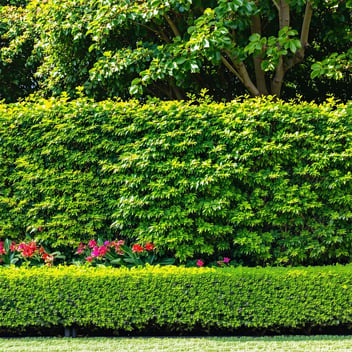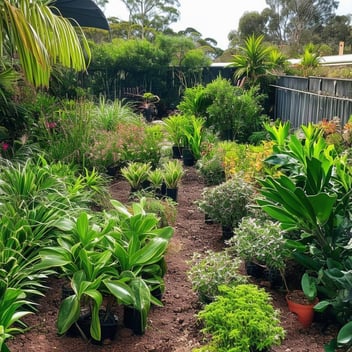How to Propagate Conifers at Home in SEQ
Introduction
Why Propagate Conifers at Home in SEQ
Propagation of conifers at home brings both botanical satisfaction and landscape benefit. In South East Queensland, where subtropical warmth, occasional drought, and salt‑laden winds shape gardens, having the ability to produce your own conifers lets you select specimens adapted to your microclimate. It builds resilience.
Advantages of Home Propagation
Cost savings. Genetic diversity. The joy of seeing new roots form. When you propagate your own plants, you maintain traits you love—whether it’s drought tolerance, compact form, or interesting foliage. Plus, it can be a meditative garden ritual.
Forms of Propagation
Seed Propagation
Growing conifers from seed is the most fundamental method. It preserves genetic variation. Seeds often need pre‑treatment such as stratification. Once germinated, seedlings grow slower but can adapt well to local conditions.
Cuttings (Softwood / Semi‑ripe)
Cuttings allow cloning of the exact parent plant. Softwood or semi‑ripe cuttings are taken from current‑season growth—wood that is firm at the base, softer toward the tip. This method often yields faster visual results than seeds.
Layering Techniques
Layering involves inducing a branch (still attached to the parent) to form roots. Two common forms: ground layering (burying a branch in soil) and air layering (moss wrap + incision + moisture). Useful when seeds germinate poorly or cuttings are slow.
Choosing Material and Timing
Selecting Healthy Parent Material
Choose vigorous, disease‑free conifers. Avoid stressed or sun‑scorched plants. Healthy foliage, strong shoots, minimal insect damage are good signs. The parent plant’s vitality strongly affects propagation success.
Best Time of Year in SEQ
Late spring to early summer works well for soft/ semi‑ripe cuttings—when growth is active. For seed collection, late summer or early autumn is often appropriate when cones mature. For layering, spring to early summer gives time for root development before heavy heat.
Soil, Tools & Environment Setup
Growing Medium and Drainage Requirements
Use well‑draining mix: a blend of good potting media plus coarse sand, perlite, or grit. Avoid waterlogging. For cuttings and seedlings, drainage and aeration are vital to prevent rot.
Tools and Hygiene
Sharp, clean pruning shears; rooting hormone; clean pots/trays. Sanitize tools to prevent disease spread. Using fresh, sterile potting mix helps avoid fungal issues.
Light, Humidity & Temperature
Indirect bright light works best for cuttings and young seedlings. Protected spots are ideal—shade cloth or dappled shade can help. High humidity encourages rooting; a mini greenhouse or misting helps. Temperature should be moderate—not scorching, not freezing.
Step‑by‑Step Methods
Propagating by Seed: Collection, Treatment, Sowing
Collect mature cones when they are dry. Extract seeds. If needed, apply cold stratification (chill seeds in moist medium for some weeks). Sow in the prepared medium, lightly cover (or just press onto surface, depending on species). Keep moist but not soggy. Germination may take weeks to months.
Propagating by Cuttings: Preparation, Rooting, Transplanting
Take cuttings ~10‑15 cm long from semi‑ripe wood. Remove lower foliage. Optionally dip in rooting hormone. Insert into moist, free‑draining mix. Cover with humidity dome or plastic bag. Wait patiently—some conifers take many months to root. When roots are well developed, transplant into deeper pots.
Layering: Ground Layering and Air Layering
For ground layering: select a low flexible branch, wound or notch underside, cover with soil, anchor in place, keep moist. Once roots form (often many months), sever and transplant. Air layering: choose a branch, remove ring of bark (or make wound), apply rooting hormone, wrap with moist sphagnum moss, seal with plastic, wait until roots visible, cut and pot.
Aftercare and Establishment
Watering and Moisture Management
New plants are vulnerable. Keep soil slightly moist—not waterlogged. Mist cuttings if needed. Once established, reduce frequency but water deeply in dry spells.
Fertilization and Nutrition
Young propagations need gentle feeding – a balanced light fertilizer or diluted organic tea. Too strong fertilizer early can burn roots. When well established, you can apply longer‑term slow‑release feeds.
Monitoring for Pests, Diseases and Other Stress
Watch for fungal rot, damping‑off in seedlings, insect attack (aphids, mites). Ensure good air circulation. Remove any rogue diseased material early. Also look for stress from heat, direct sun, or poor soil.
Common Pitfalls and Troubleshooting
Rooting Failure / Rot / Desiccation
If cuttings rot, likely overwatering or poor drainage. If they dry out, humidity too low. Using correct medium, ensuring moisture, yet avoiding stagnation is key.
Poor Germination Rates
Caused by unviable seed, incorrect stratification, or improper sowing depth/medium. Always test small batch first; adjust based on observation.
Environmental Stressors (Heat, Humidity, Shade)
SEQ’s climate can be humid and hot—this can cause fungal issues or sunburn. Shade masks, good ventilation, and timing propagation to avoid peak heat help.
Recommended Conifer Species for Home Propagation in SEQ
Species That Root Well from Cuttings
Native Australian species like Callitris columellaris (Bribie Island Pine) often respond well. Some Juniperus cultivars also root reliably from semi‑ripe cuttings.
Species That Germinate Easily
Conifers that produce abundant viable seed can be good—look for species with mature cones that open dryly. Local native conifers again tend to germinate well, being adapted to the local conditions.
Conclusion
Propagation of conifers at home in SEQ is both achievable and rewarding. With patience, correct technique, and respect for environmental nuances, gardeners can multiply beloved plants. Over time, propagated conifers become pillars in gardens—silent, evergreen witnesses to your care and craft.




